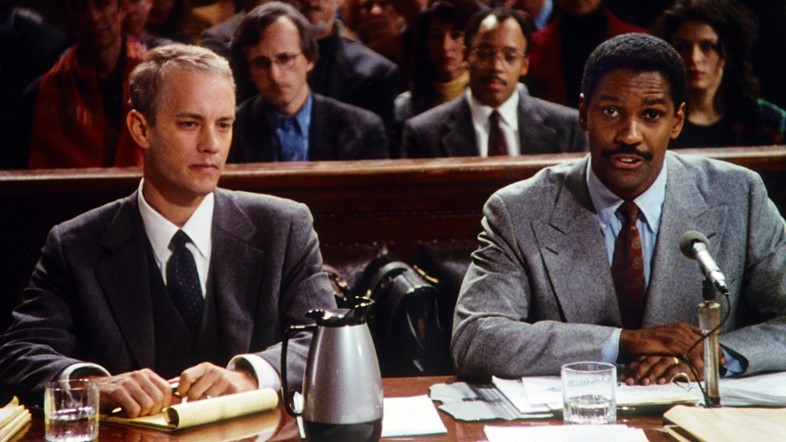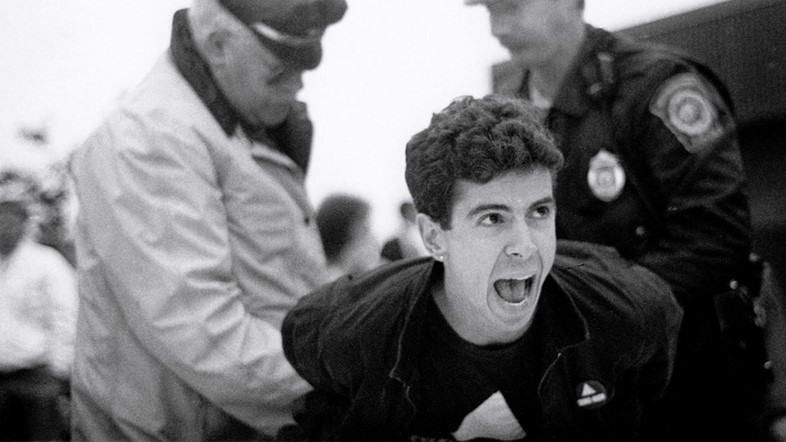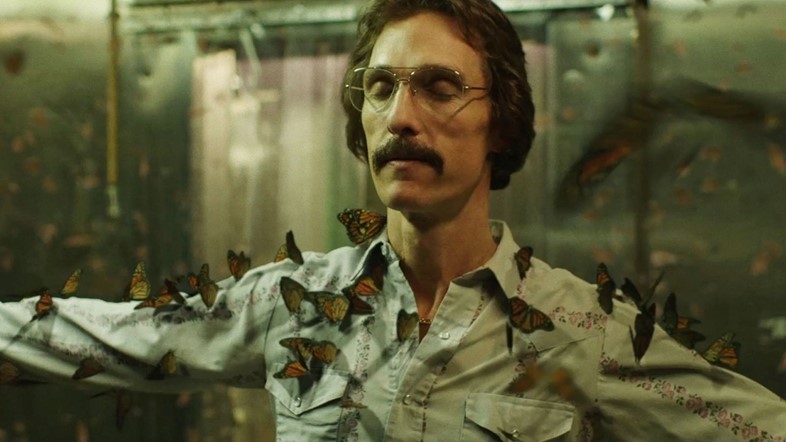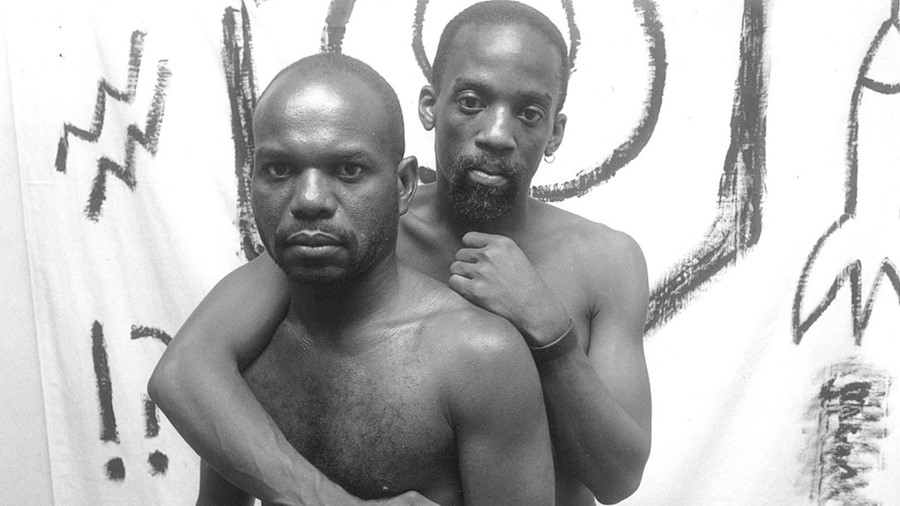On World Aids Day, Louis Staples spotlights five films that look at the virus and its devastating effects
A version of this article originally appeared on AnotherManmag.com:
The Aids crisis of the 80s and 90s was devastating to the queer community. In America, systemic homophobia led to a slow reaction from the government, resulting in hundreds of thousands of deaths that could have been and should have been prevented. Widespread desperation and anger towards the government meant that HIV/Aids patients were forced to become their own advocates. From pressuring the government to provide more effective medical options, to demanding an end to employment discrimination, the Aids crisis was a time of fierce resistance.
As is so often the case with representations of queerness in visual art, it is difficult to find a balance between depicting the suffering of these years while documenting the tenacity and beauty of a community coming together while under siege. But in the last three decades, we have seen filmic representations of Aids that have been powerful, nuanced and complex. As well as showing us how far things have moved on, these works act as a reminder that the global Aids epidemic is far from over.
The Aids crisis of the 1980s claimed the lives of hundreds of thousands of people, but their stories live on. The role of queer people in pushing for solutions, which ultimately saved millions of lives, cannot be understated. These stories, as harrowing as they are inspiring and as infuriating as they are beautiful, are forever stitched into the cultural tapestry of our community.
Here, we delved into the archives to reflect on some of the most powerful representations of the virus on screen.
Tongues Untied, 1989
Tongues Untied is a semi-documentary film that explores Black gay identity. Blending documentary footage, personal accounts and fiction, the film breaks the silence of Black gay men who were less able to express themselves because of the prejudices of white and Black heterosexual society, as well as white gay society. The documentary explores the experience of its director, Marlon Riggs, as he comes to terms with his sexuality and copes with many of his friends dying from Aids.
By exploring popular culture alongside the political landscape of the late 1980s, in which homophobia was deeply imbedded, the film simultaneously debates the politics of racism, homophobia and exclusion, but also their relevance to contemporary sexual politics. With so many films focussing on a narrow experience of Aids and homophobia, Tongues Untied challenges the implicitly white-framing of these discussions.

Philadelphia, 1993
Philadelphia is one of the first mainstream Hollywood films to simultaneously explore HIV/Aids, homosexuality and homophobia. The film follows Andrew Beckett, played by Tom Hanks, a senior associate at a successful corporate law firm in Philadelphia. Although Beckett is ‘out’ to his family and friends, and lives with his partner Miguel, he hides his homosexuality and status as an Aids patient from his work. But after a colleague notices a lesion on Beckett’s forehead, indicating he has Aids, the firm conspire to get him dismissed by hiding paperwork relating to a crucial case.
After being fired, Beckett sets out to sue his former employer for unfair dismissal, claiming they fired him because he was gay and had Aids. Unable to find a lawyer to represent him, personal injury lawyer Joe Miller, played by Denzel Washington, finally agrees to help him. Miller, a self-confessed homophobe, has his own attitudes challenged as the case causes the two men’s lives and values to become closely entwined. Beckett’s health rapidly deteriorates as the trial hurtles towards its conclusion, but he still has the full support of his family, partner and friends. Although it is difficult to watch at points, Philadelphia’s overarching message is one of love, compassion and, most of all, justice.

And the Band Played On, 1993
And the Band Played On is a 1993 American television film drama based on the best-selling 1987 non-fiction book of the same name by Randy Shilts. In 1981, Don Francis begins to investigate the growing number of deaths from unexplained sources among gay men in New York City, Los Angeles and San Francisco.
Working with no money, limited space and old equipment, he comes in contact with politicians, medical professionals and gay activists. Francis struggles with his research, finding that those in power in the medical profession are more preoccupied with taking credit for discovering Aids than identifying its cause or a cure. Bill Kraus, an Aids activist and congressional aid played by Ian McKellen, supports Francis’s theory that HIV and Aids are sexually transmitted. But their efforts are stonewalled by the Centers for Disease Control and Prevention. The film reveals, in brutal fashion, how bureaucracy combined with a lack of urgency distracted the government’s focus from saving lives, allowing the Aids epidemic to spiral out of control.

How to Survive a Plague, 2012
How to Survive a Plague is a 2012 American documentary film about the early years of the Aids epidemic, focussing on the work of the organisations Aids Coalition to Unleash Power (ACT UP) and Treatment Action Group (TAG). The documentary, like other films on this list, focuses on the US government’s failure to react to the epidemic quickly and effectively. In the early years the Aids crisis, the only approved drug available to treat HIV was AZT, which was ineffective and could cause blindness. ACT UP lobbied the FDA to shorten trials for drugs, which could take up to ten years, in order to make more drugs available. This saved over six million lives.
The documentary was produced using over 700 hours of original footage. This included news coverage, interviews as well as film of demonstrations, meetings and conferences taken by ACT UP members themselves. This footage shows the sheer scale of the problem and the widespread desperation of the LGBTQ+ community, but also the incredible courage and tenacity of queer people. It also displayed the shocking homophobia of lawmakers, including President George Bush, in regards to the crisis. In a particularly powerful scene, thousands of protesters descended on Capitol Hill to place the ashes of friends who they have lost on the lawn, in full view of the government.
The sense that history was in the making can be felt throughout the film. Most of the activists assumed they only had months to live, so fighting the virus for the next generation gave them purpose. In the closing frames, activist Peter Staley tells a crowd: “One day the age crisis will be over. When that day comes, there will be people on this earth who will hear the story that once there was a terrible disease. They’ll here that brave group of people fought, and in some cases died, so that others could be free.”

Dallas Buyers Club, 2013
Dallas Buyers Club tells the real-life story of Ron Woodroof, an Aids patient from Texas diagnosed in the mid-80s, when HIV/Aids treatments were under-researched and the disease was highly stigmatised. As HIV and Aids swept across America, the government was slow to act, embarking on a string of time-consuming trials that yielded little results as the death toll continued to rise.
Joining the experimental Aids treatment movement, Woodroof, played by Matthew McConaughey, smuggled unapproved pharmaceutical drugs into Texas for treating his symptoms. He formed the ‘Dallas Buyers Club’, where these drugs were distributed to paying members, which faced opposition from the Food and Drug Administration (FDA). Chauvinistic womaniser Woodroof enlists the help of Rayon, a trans Aids patient played by Jared Leto. The two form an unlikely friendship, as the shared experience of Aids brings them together. The film captures the sense of urgency, frustration and desperation felt by Aids patients and doctors when medical options were limited.
